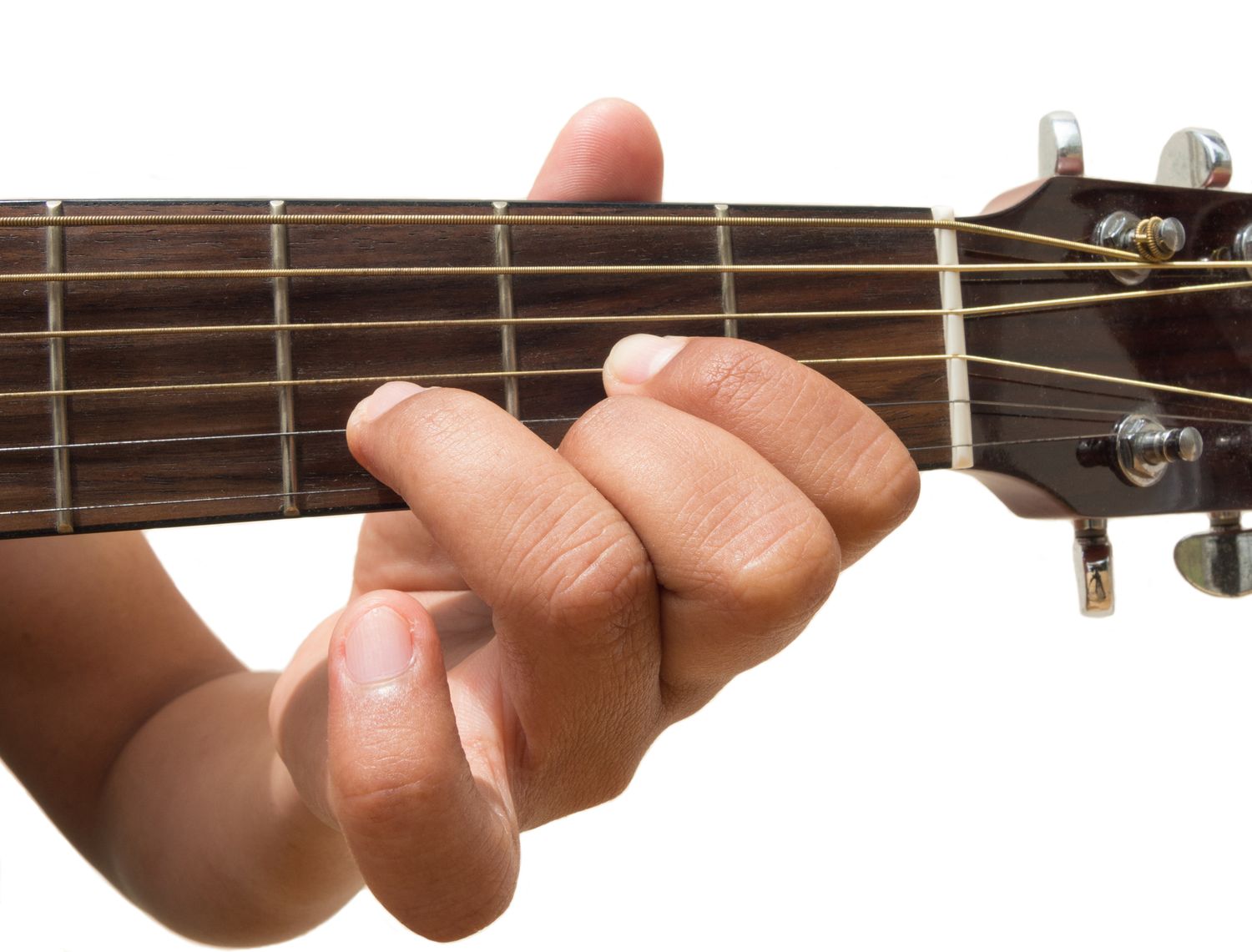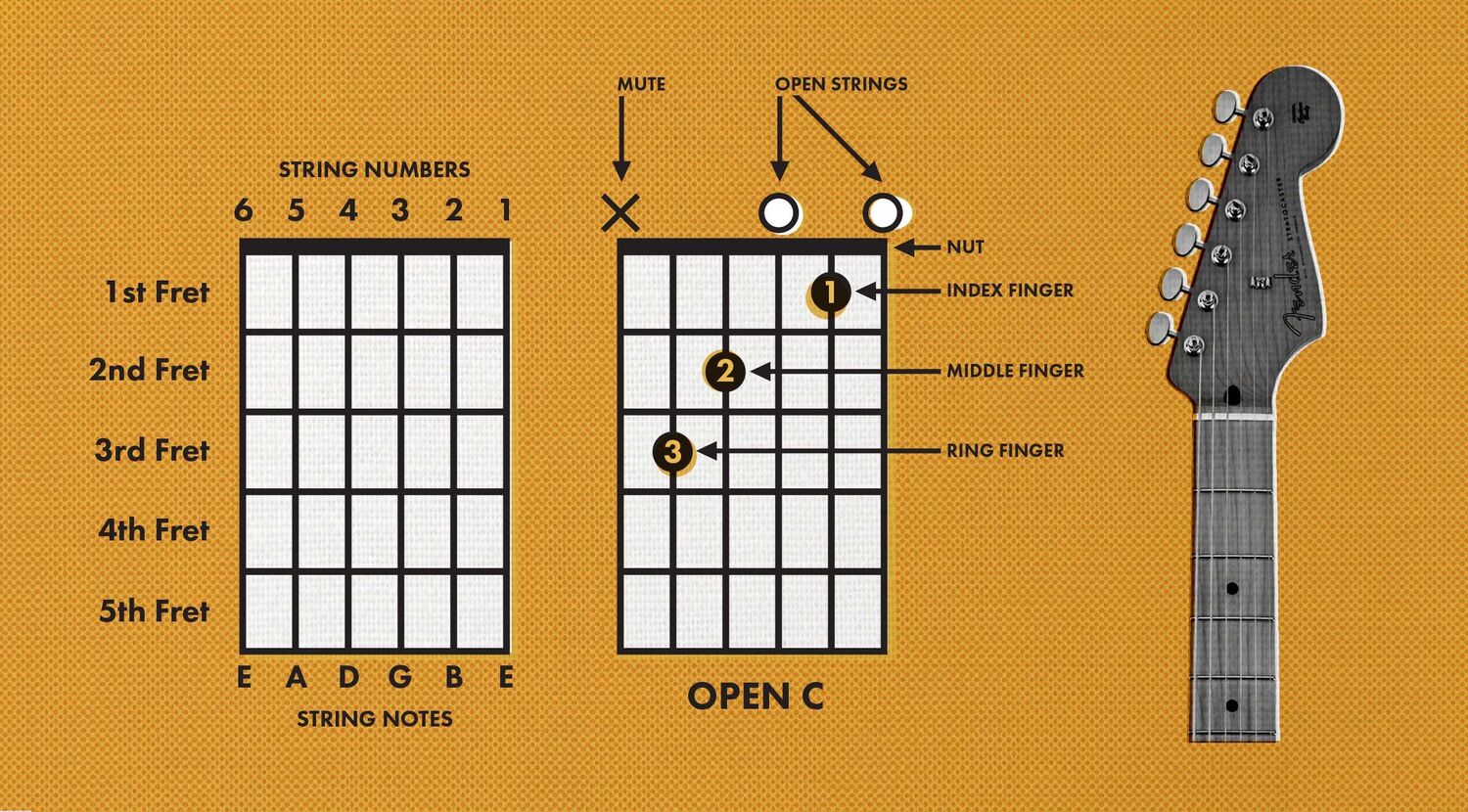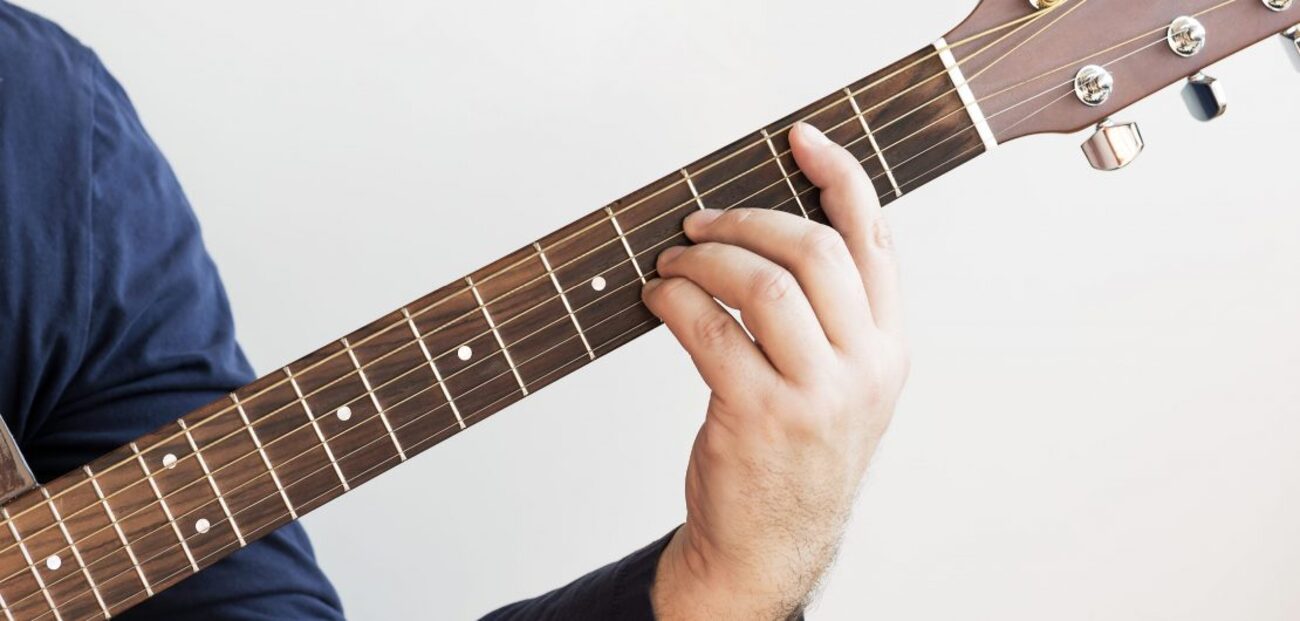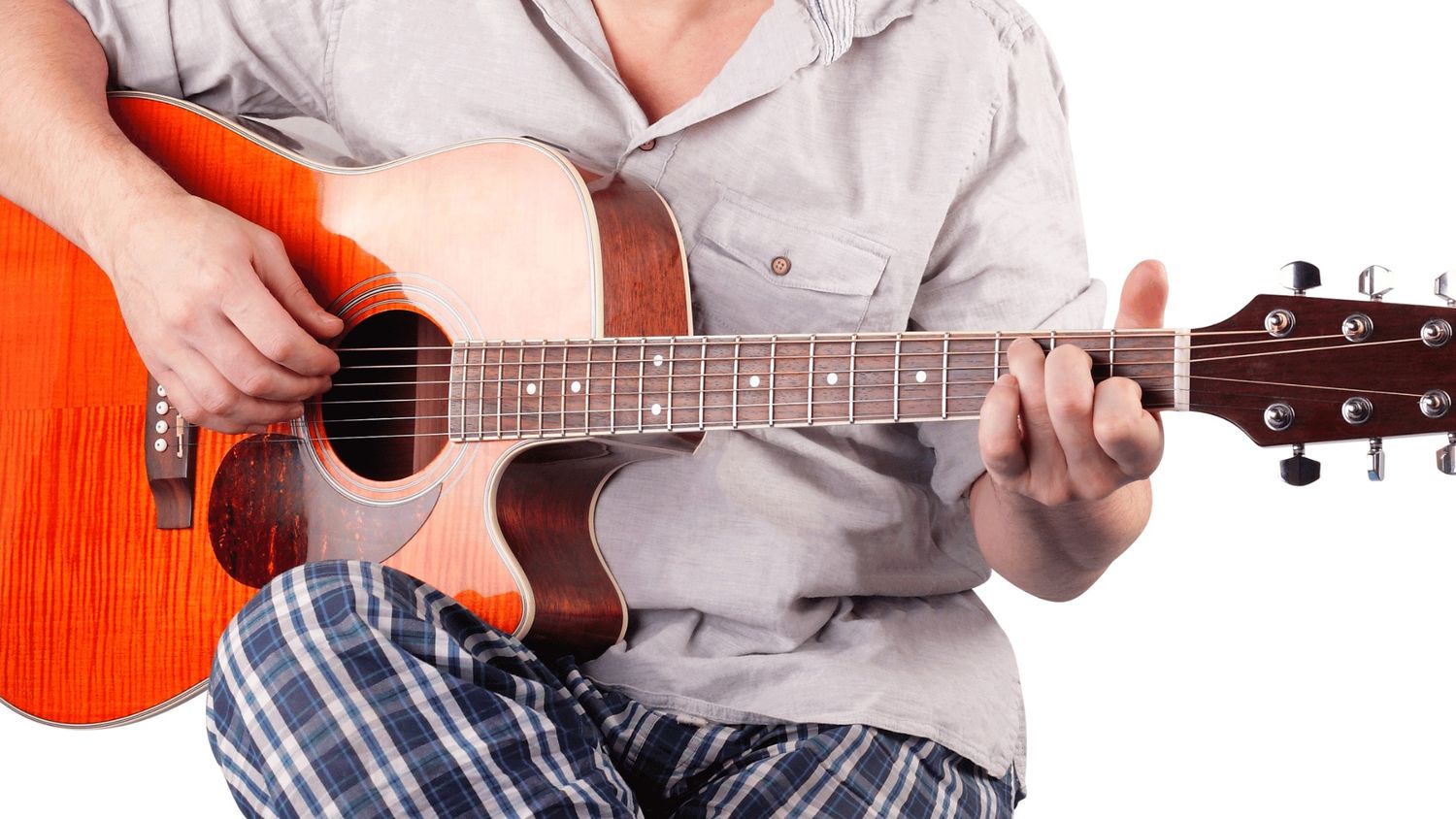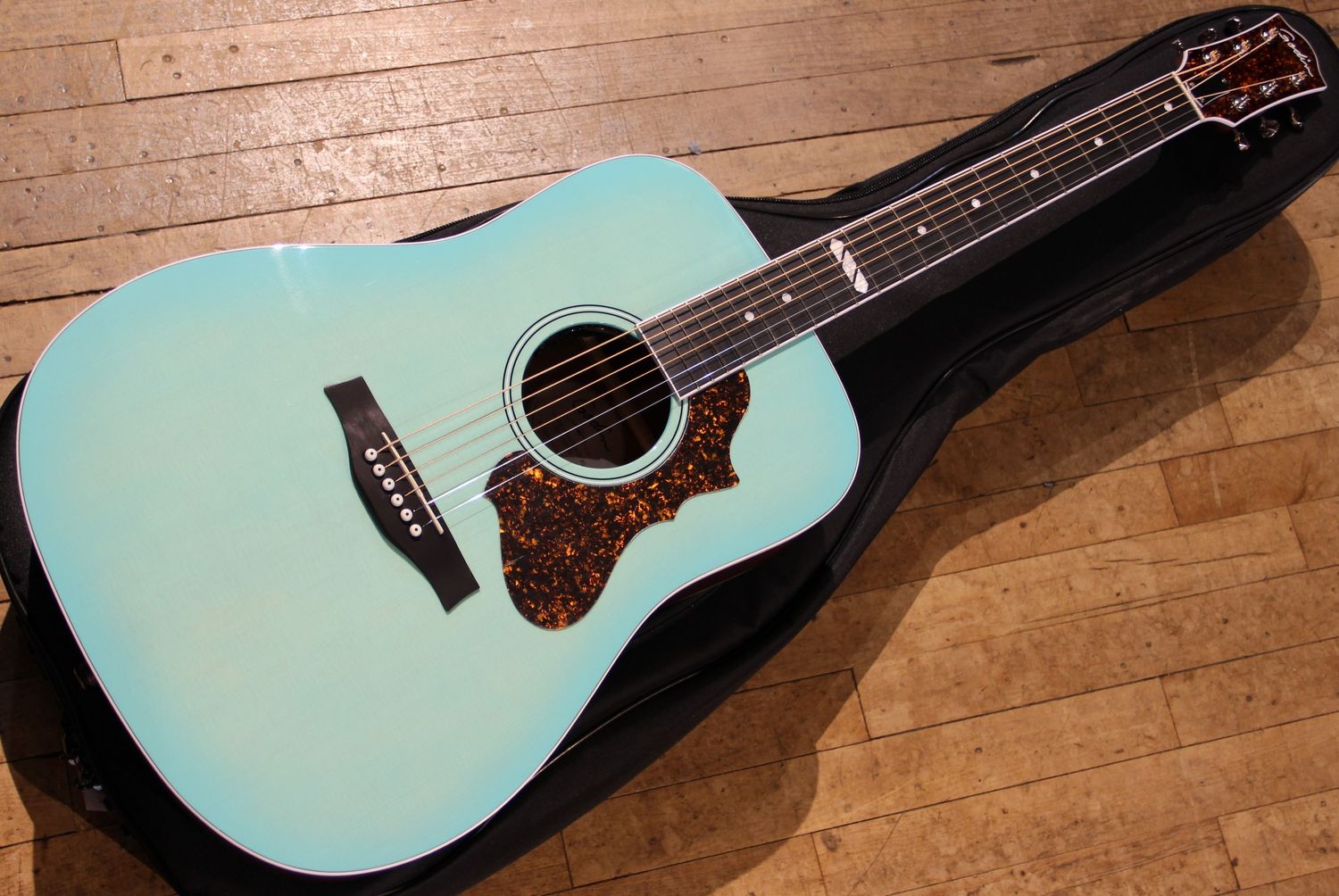Home>Production & Technology>Acoustic>How Many Acoustic Guitar Chords Are There
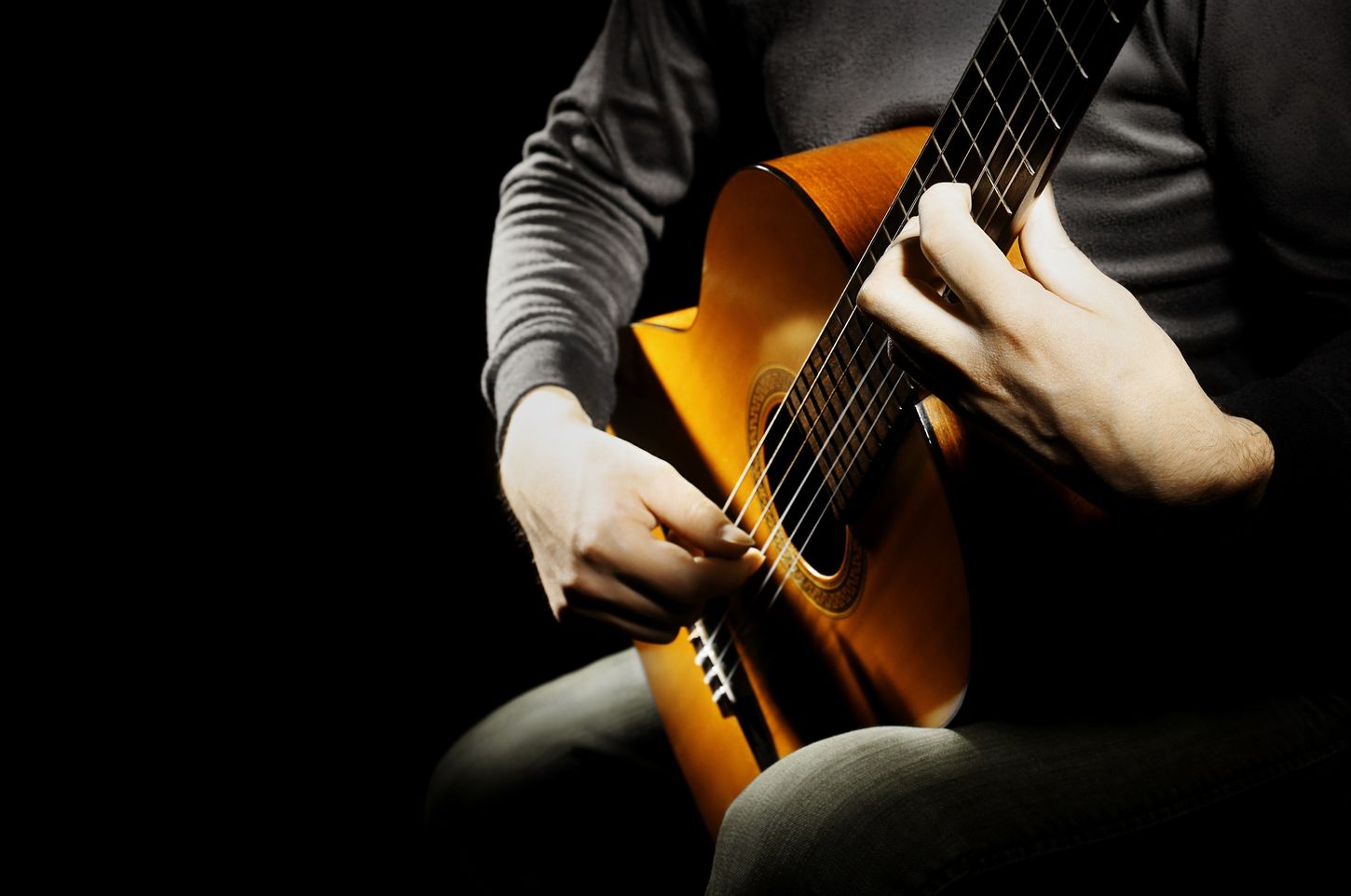

Acoustic
How Many Acoustic Guitar Chords Are There
Published: March 11, 2024
Learn about the countless acoustic guitar chords and expand your musical repertoire. Discover the versatility of acoustic chords today!
(Many of the links in this article redirect to a specific reviewed product. Your purchase of these products through affiliate links helps to generate commission for AudioLover.com, at no extra cost. Learn more)
Table of Contents
Introduction
Acoustic guitars are renowned for their versatility and timeless appeal. Whether you're strumming along to your favorite songs or composing your own melodies, understanding the fundamentals of acoustic guitar chords is essential for any aspiring musician. Chords form the backbone of countless songs across various genres, making them a fundamental aspect of guitar playing.
From the melancholic resonance of a minor chord to the uplifting harmony of a major chord, the world of acoustic guitar chords is as diverse as it is captivating. As a guitarist, mastering a wide array of chords opens the door to endless musical possibilities, allowing you to express emotions and convey stories through the enchanting sound of your instrument.
In this comprehensive guide, we will delve into the fascinating realm of acoustic guitar chords, exploring the different types and variations that contribute to the rich tapestry of musical expression. Whether you're a novice seeking to grasp the basics or a seasoned player looking to expand your chord repertoire, this exploration will provide valuable insights and practical knowledge to elevate your guitar journey.
Let's embark on this melodious adventure, unraveling the intricacies of acoustic guitar chords and discovering the harmonic tapestry that forms the foundation of countless beloved melodies.
Basic Chords
Basic chords serve as the building blocks of musical harmony, laying the groundwork for countless melodies and compositions. These fundamental chords are essential for beginners and experienced guitarists alike, forming the cornerstone of acoustic guitar playing. Understanding and mastering basic chords is crucial for developing a strong foundation in music theory and guitar technique.
Major Chords
Major chords exude a sense of brightness and optimism, making them a staple in various musical genres. Constructed from the root, major third, and perfect fifth notes, major chords produce a vibrant and uplifting sound. Common major chords include C major, G major, and D major, each with its own distinct tonal quality and emotive resonance.
Minor Chords
In contrast to major chords, minor chords evoke a more somber and introspective mood. Comprised of the root, minor third, and perfect fifth notes, minor chords infuse compositions with a sense of depth and melancholy. Embracing minor chords such as A minor, E minor, and D minor adds a poignant and emotive dimension to musical arrangements.
Dominant 7th Chords
Dominant 7th chords introduce a touch of tension and intrigue to musical compositions. These chords, characterized by the root, major third, perfect fifth, and minor seventh notes, possess a captivating allure that enriches the harmonic landscape. Embracing dominant 7th chords such as A7, E7, and D7 infuses compositions with a sense of anticipation and allure, making them a compelling addition to a guitarist's repertoire.
Suspended Chords
Suspended chords, denoted as sus2 and sus4, offer a refreshing departure from traditional major and minor chords. By suspending the third note and introducing the second or fourth note, these chords create an enigmatic and ethereal ambiance. Incorporating suspended chords such as Asus2, Dsus4, and Esus2 infuses compositions with a captivating sense of intrigue and harmonic allure.
Diminished Chords
Diminished chords exude a sense of tension and unease, adding a touch of complexity to musical arrangements. Constructed from the root, minor third, and diminished fifth notes, diminished chords possess a distinctively enigmatic and mysterious quality. Embracing diminished chords such as Bdim, Edim, and Gdim introduces a captivating sense of tension and allure to compositions, enriching the sonic tapestry with their unique tonal characteristics.
Mastering these basic chords lays a solid foundation for aspiring guitarists, empowering them to explore the boundless realm of musical expression and creativity. Whether strumming along to beloved classics or composing original compositions, the proficiency in basic chords is an invaluable asset for any guitarist seeking to embark on a melodious journey.
Barre Chords
Barre chords, also known as bar chords, are a fundamental component of a guitarist's repertoire, offering a versatile and dynamic approach to playing the acoustic guitar. These chords derive their name from the technique used to fret the strings, wherein a single finger is employed to press down multiple strings across the fretboard. This technique enables guitarists to play a wide range of chords using movable shapes, expanding the harmonic possibilities and facilitating seamless transitions between different keys and tonalities.
Understanding the Technique
Mastering the art of barre chords requires precision and dexterity, as it involves using the index finger to form a "bar" across the fretboard, effectively acting as a movable nut. By flattening the index finger against the fretboard and exerting uniform pressure on the strings, guitarists can produce full-bodied chords that resonate with clarity and depth. This technique empowers players to create major, minor, and dominant 7th chords, among others, using consistent finger positioning and fretboard navigation.
Versatility and Transposition
One of the defining attributes of barre chords is their transpositional flexibility, allowing guitarists to effortlessly transpose chord shapes up and down the fretboard to access different keys and chord voicings. This versatility is particularly valuable when navigating complex chord progressions and modulations, as barre chords provide a streamlined method for accessing a diverse array of tonalities without relying on open chord shapes.
Common Barre Chord Shapes
Several common barre chord shapes serve as foundational tools for guitarists seeking to expand their harmonic vocabulary. The E-shaped barre chord and the A-shaped barre chord are among the most prevalent, offering distinct tonal characteristics and ergonomic fingerings that cater to various musical contexts. Additionally, the ability to modify these shapes by incorporating extensions and alterations further enhances the expressive potential of barre chords, enabling musicians to craft rich and nuanced harmonic textures.
Enhancing Musical Expressiveness
By incorporating barre chords into their playing, guitarists can elevate their musical expressiveness and adaptability, infusing compositions with a heightened sense of depth and sophistication. The seamless integration of barre chords into chord progressions and melodic accompaniments empowers musicians to explore diverse musical genres and styles, from folk and rock to jazz and beyond, fostering a dynamic and multifaceted approach to acoustic guitar performance.
Mastery and Artistry
While mastering barre chords may initially present a challenge, the rewards of proficiency are immeasurable. As guitarists hone their skills and internalize the intricacies of barre chord technique, they unlock a world of harmonic possibilities and creative expression. The ability to fluidly navigate the fretboard, effortlessly transitioning between barre chord shapes and open chords, is a hallmark of accomplished guitarists, reflecting a dedication to craftsmanship and a passion for musical artistry.
Embracing the Harmonic Tapestry
In essence, barre chords serve as a gateway to a rich and expansive harmonic tapestry, enabling guitarists to weave intricate and evocative musical landscapes. Whether embarking on soul-stirring ballads, unleashing vibrant rhythmic accompaniments, or embarking on improvisational journeys, the mastery of barre chords empowers musicians to channel their emotions and narratives through the resonant strings of the acoustic guitar, forging a profound connection with their audience and the timeless tradition of musical storytelling.
Incorporating barre chords into one's musical repertoire represents a transformative step in the journey of acoustic guitar mastery, offering a gateway to boundless creativity and expressive potential. As guitarists embrace the nuances of barre chord technique and immerse themselves in its harmonic allure, they embark on a captivating odyssey of musical discovery, enriching their sonic palette and leaving an indelible imprint on the melodic tapestry of the world.
Open Chords
Open chords, also known as first-position chords, are foundational elements of acoustic guitar playing, offering a harmonically rich and accessible approach to crafting melodic accompaniments and chord progressions. These chords derive their name from the fact that they incorporate open strings, adding depth and resonance to their tonal quality. Open chords are integral to various musical styles, from folk and country to pop and rock, serving as the cornerstone of countless beloved compositions.
Embracing Accessibility and Resonance
One of the defining characteristics of open chords is their accessibility to guitarists of all skill levels. These chords are often among the first shapes that aspiring musicians learn, providing an entry point into the captivating world of guitar playing. By incorporating open strings into chord voicings, these chords resonate with a full and vibrant sound, infusing compositions with a warm and inviting tonal character.
Exploring Common Open Chords
Several common open chords form the bedrock of acoustic guitar repertoire, each offering a distinct sonic signature and emotive resonance. The foundational open chords include the timeless E major, A major, D major, G major, and C major chords, along with their minor counterparts such as E minor, A minor, and D minor. These chords serve as versatile building blocks for crafting melodic frameworks and harmonic foundations, enabling guitarists to express a spectrum of emotions and narratives through their instrument.
Fostering Expressive Versatility
Open chords empower guitarists to explore a diverse array of musical expressions, from soulful balladry to spirited rhythmic accompaniments. The seamless integration of open chords into chord progressions and song arrangements fosters a dynamic and multifaceted approach to acoustic guitar performance, allowing musicians to convey a range of moods and atmospheres through their playing. Whether strumming gentle arpeggios or unleashing vibrant chordal textures, the expressive versatility of open chords enriches musical compositions with depth and nuance.
Navigating Harmonic Transitions
Mastering open chords involves developing proficiency in transitioning between different chord shapes and voicings, facilitating seamless progressions and melodic embellishments. This skill is essential for navigating diverse musical genres and styles, enabling guitarists to adapt their playing to suit various compositions and arrangements. The ability to fluidly transition between open chords and other chord forms enhances a guitarist's adaptability and musical fluency, empowering them to navigate complex harmonic landscapes with confidence and finesse.
Cultivating Musical Artistry
In essence, open chords serve as a canvas for cultivating musical artistry, inviting guitarists to imbue their compositions with emotion, narrative, and sonic allure. Whether evoking nostalgia with a gentle progression of C, G, and D chords or infusing a composition with the introspective depth of E minor and A minor, open chords provide a versatile palette for crafting evocative musical landscapes. As guitarists embrace the harmonic richness of open chords, they embark on a captivating journey of creative expression, channeling their innermost sentiments through the resonant strings of the acoustic guitar.
Embracing the Melodic Tapestry
Embracing open chords represents a transformative step in the journey of acoustic guitar mastery, offering a gateway to boundless creativity and expressive potential. As guitarists immerse themselves in the harmonic allure of open chords, they weave intricate and evocative musical tapestries, leaving an indelible imprint on the melodic tradition of the world. Whether strumming along to beloved classics or composing original compositions, the proficiency in open chords is an invaluable asset for any guitarist seeking to embark on a melodious journey.
Incorporating open chords into one's musical repertoire empowers musicians to channel their emotions and narratives through the resonant strings of the acoustic guitar, forging a profound connection with their audience and the timeless tradition of musical storytelling.
Power Chords
Power chords, often associated with the raw energy of rock and punk music, are a staple in the repertoire of guitarists across diverse musical genres. These robust and sonically compelling chords are characterized by their stripped-down structure, consisting of the root note and the fifth interval, devoid of the third note found in major and minor chords. This omission of the third note imbues power chords with a versatile and assertive sonic quality, making them a favored choice for crafting driving rhythms and dynamic melodic accompaniments.
Sonic Potency and Versatility
The inherent potency of power chords lies in their ability to deliver a forceful and resonant sound, characterized by a compelling blend of harmonic richness and raw power. This sonic versatility enables guitarists to infuse compositions with a bold and assertive tonal character, making power chords an indispensable tool for crafting anthemic riffs, aggressive chord progressions, and high-octane musical arrangements.
Fretboard Navigation and Mobility
One of the defining attributes of power chords is their transpositional flexibility, facilitated by their movable shape and minimalistic structure. This mobility empowers guitarists to effortlessly transpose power chord shapes across the fretboard, accessing a myriad of tonalities and keys with ease. The streamlined nature of power chords enables musicians to navigate complex chord progressions and modulations, fostering a dynamic and adaptable approach to crafting compelling musical landscapes.
Amplifying Musical Intensity
Incorporating power chords into compositions elevates the musical intensity, infusing arrangements with a palpable sense of vigor and drive. Whether driving the rhythmic backbone of a high-energy rock anthem or adding a punchy edge to a melodic accompaniment, power chords serve as a catalyst for injecting compositions with a spirited and electrifying sonic presence. The seamless integration of power chords into musical arrangements empowers guitarists to convey a spectrum of emotions and atmospheres, from unbridled energy to anthemic grandeur.
Dynamic Expressiveness and Artistry
While power chords are often associated with their role in driving rock and punk compositions, their dynamic expressiveness transcends genre boundaries, offering a versatile palette for crafting diverse musical expressions. The bold and assertive nature of power chords enables guitarists to explore a range of sonic textures and moods, from aggressive and rebellious to anthemic and triumphant. This expressive versatility fosters a multifaceted approach to acoustic guitar performance, allowing musicians to channel their creative vision and emotional depth through the resonant strings of the instrument.
Embracing the Sonic Tapestry
In essence, power chords serve as a dynamic thread in the sonic tapestry of acoustic guitar playing, offering a gateway to boundless creativity and expressive potential. As guitarists harness the raw energy and harmonic allure of power chords, they embark on a captivating odyssey of musical discovery, enriching their sonic palette and leaving an indelible imprint on the melodic tradition of the world. Whether crafting driving rhythms, unleashing anthemic refrains, or embarking on improvisational journeys, the mastery of power chords empowers musicians to amplify their sonic presence and forge a profound connection with their audience through the timeless tradition of musical storytelling.
Extended Chords
Extended chords, often referred to as rich and complex harmonic entities, expand upon the foundational triads of major and minor chords, introducing additional intervals that infuse compositions with depth, sophistication, and emotive resonance. These captivating chords, characterized by the incorporation of extended notes beyond the basic triad structure, offer a nuanced and evocative approach to crafting melodic accompaniments and harmonic frameworks. By embracing extended chords, guitarists embark on a harmonically enriching journey, unlocking a world of expressive potential and creative versatility.
Embracing Harmonic Complexity
Extended chords encompass a diverse array of harmonic extensions, including the 7th, 9th, 11th, and 13th intervals, each contributing to the lush and intricate tapestry of the chord's tonal character. The addition of these extended notes introduces a sense of harmonic complexity, imbuing compositions with a captivating blend of tension, allure, and emotive depth. Whether incorporating the jazzy sophistication of a dominant 9th chord or the ethereal allure of a major 13th chord, extended chords offer a palette of harmonic colors for guitarists to paint their musical narratives.
Enriching Melodic Texture
The inclusion of extended chords elevates the melodic texture of compositions, adding layers of harmonic richness and expressive nuance. These chords serve as a vehicle for conveying a spectrum of emotions and atmospheres, from introspective introspections to exuberant exultations. Whether weaving intricate jazz progressions or infusing ballads with poignant resonance, extended chords empower guitarists to sculpt evocative musical landscapes that resonate with depth and sophistication.
Navigating Harmonic Transitions
Mastering extended chords involves developing proficiency in navigating harmonic transitions and voicings, facilitating seamless progressions and melodic embellishments. This skill is essential for exploring diverse musical genres and styles, enabling guitarists to adapt their playing to suit various compositions and arrangements. The ability to fluidly integrate extended chords into chord progressions and song arrangements enhances a guitarist's adaptability and musical fluency, fostering a dynamic and multifaceted approach to acoustic guitar performance.
Cultivating Musical Artistry
In essence, extended chords serve as a canvas for cultivating musical artistry, inviting guitarists to imbue their compositions with emotion, narrative, and sonic allure. The harmonic complexity and expressive versatility of extended chords empower musicians to craft captivating musical narratives, channeling their innermost sentiments through the resonant strings of the acoustic guitar. As guitarists embrace the harmonic richness of extended chords, they embark on a captivating journey of creative expression, forging a profound connection with their audience and the timeless tradition of musical storytelling.
Incorporating extended chords into one's musical repertoire represents a transformative step in the journey of acoustic guitar mastery, offering a gateway to boundless creativity and expressive potential. As guitarists immerse themselves in the harmonic allure of extended chords, they weave intricate and evocative musical tapestries, leaving an indelible imprint on the melodic tradition of the world. Whether crafting intricate jazz progressions, infusing ballads with poignant resonance, or embarking on improvisational journeys, the mastery of extended chords empowers musicians to channel their emotions and narratives through the resonant strings of the acoustic guitar, forging a profound connection with their audience and the timeless tradition of musical storytelling.
Conclusion
In the realm of acoustic guitar playing, the exploration of chords transcends mere technical proficiency, evolving into a profound journey of creative expression and emotive storytelling. From the foundational simplicity of basic chords to the harmonic intricacies of extended chords, each chord type contributes to the rich tapestry of musical narratives woven by guitarists across the globe.
As aspiring musicians embark on their melodic odyssey, the mastery of basic chords lays a solid foundation, empowering them to navigate the harmonic landscape with confidence and finesse. Major, minor, dominant 7th, suspended, and diminished chords form the cornerstone of musical expression, infusing compositions with a spectrum of emotions and tonal nuances.
The introduction of barre chords expands the guitarist's toolkit, offering a versatile approach to fretboard navigation and transpositional flexibility. This technique unlocks a world of harmonic possibilities, enabling seamless transitions between different keys and tonalities, while amplifying the expressive potential of musical compositions.
Open chords, with their accessible and resonant nature, serve as a gateway to boundless creativity, inviting guitarists to imbue their compositions with emotion, narrative, and sonic allure. These foundational chords foster a dynamic and multifaceted approach to acoustic guitar performance, allowing musicians to channel a range of moods and atmospheres through their playing.
Power chords, renowned for their raw energy and sonic potency, amplify the musical intensity, infusing arrangements with a palpable sense of vigor and drive. Their dynamic expressiveness transcends genre boundaries, offering a versatile palette for crafting diverse musical expressions, from aggressive and rebellious to anthemic and triumphant.
The exploration of extended chords represents a harmonically enriching journey, unlocking a world of expressive potential and creative versatility. These chords serve as a canvas for cultivating musical artistry, inviting guitarists to sculpt evocative musical landscapes that resonate with depth and sophistication.
In essence, the world of acoustic guitar chords is a captivating tapestry of harmonic colors and emotive textures, inviting musicians to embark on a transformative journey of creative expression and storytelling. As guitarists harness the raw energy and harmonic allure of chords, they leave an indelible imprint on the melodic tradition of the world, forging a profound connection with their audience through the timeless tradition of musical storytelling.

